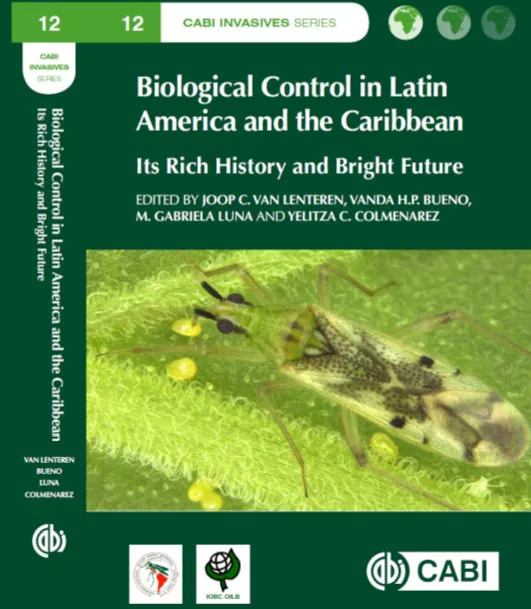 The fact that there are efficient natural enemies for pest control in South America gives hope for biological control options in Europe, should the pests settle here, says professor Joop van Lenteren from Wageningen University & Research. Together with three colleagues from Latin America, he published a book about biological pest control in South America and the Caribbean last week.
The fact that there are efficient natural enemies for pest control in South America gives hope for biological control options in Europe, should the pests settle here, says professor Joop van Lenteren from Wageningen University & Research. Together with three colleagues from Latin America, he published a book about biological pest control in South America and the Caribbean last week.
The book entitled 'Biological Control in Latin America and the Caribbean' provides a complete overview of the history and current situation of biological control in all the countries in South America and the Caribbean islands. The book describes a large number of projects, many of which have been successfully applied for decades.
Many of those projects were, until now, hardly or not at all known outside of South America. "The biggest surprise, however, was the huge acreage - more than 60 million hectares - on which biological control is applied in this region," says Joop.
But what exactly does the average grower need to know about biological control in South America and the Caribbean?
For growers, the book is particularly interesting to see in how many different crops biological control is used in South America and the Caribbean and not only to combat insect and mite infestations, but especially also to combat diseases in the soil and above ground.
What can the average grower learn from the situation over there?
As for greenhouse cultivations, the situation is not very different from Europe. However, some pests are present in greenhouses that we do not have in Europe yet, that are controlled by natural enemies. Some of those pests have already incidentally been found in Europe, but have been destroyed in time. The fact that there are efficient natural enemies in South America gives good hope for biological control options in Europe, should these pests settle here.
There are major differences with Europe when it comes to open field cultivations: in South America there is much more biological control of pests in open field cultivations. An interesting example is the use of biological control on nearly 13,000 hectares of asparagus in Peru.
What piece of knowledge from the Netherlands has recently helped growers in South America and the Caribbean the most?
The Netherlands has made an important contribution both in the Caribbean and on the South American continent by providing knowledge for biological control of pests in protected cultivations, but also for pests in open field cultivations where the same natural enemies can be used that are applied in greenhouses in the Netherlands.
An example is the combating of leaf flies with parasitic wasps in melon cultivation in the north east of Brazil. Furthermore, the Dutch biological control industry is active in a number of countries in the region.
More information about the book can be found here. You can of course also send an e-mail to joop.vanlenteren@wur.nl.
